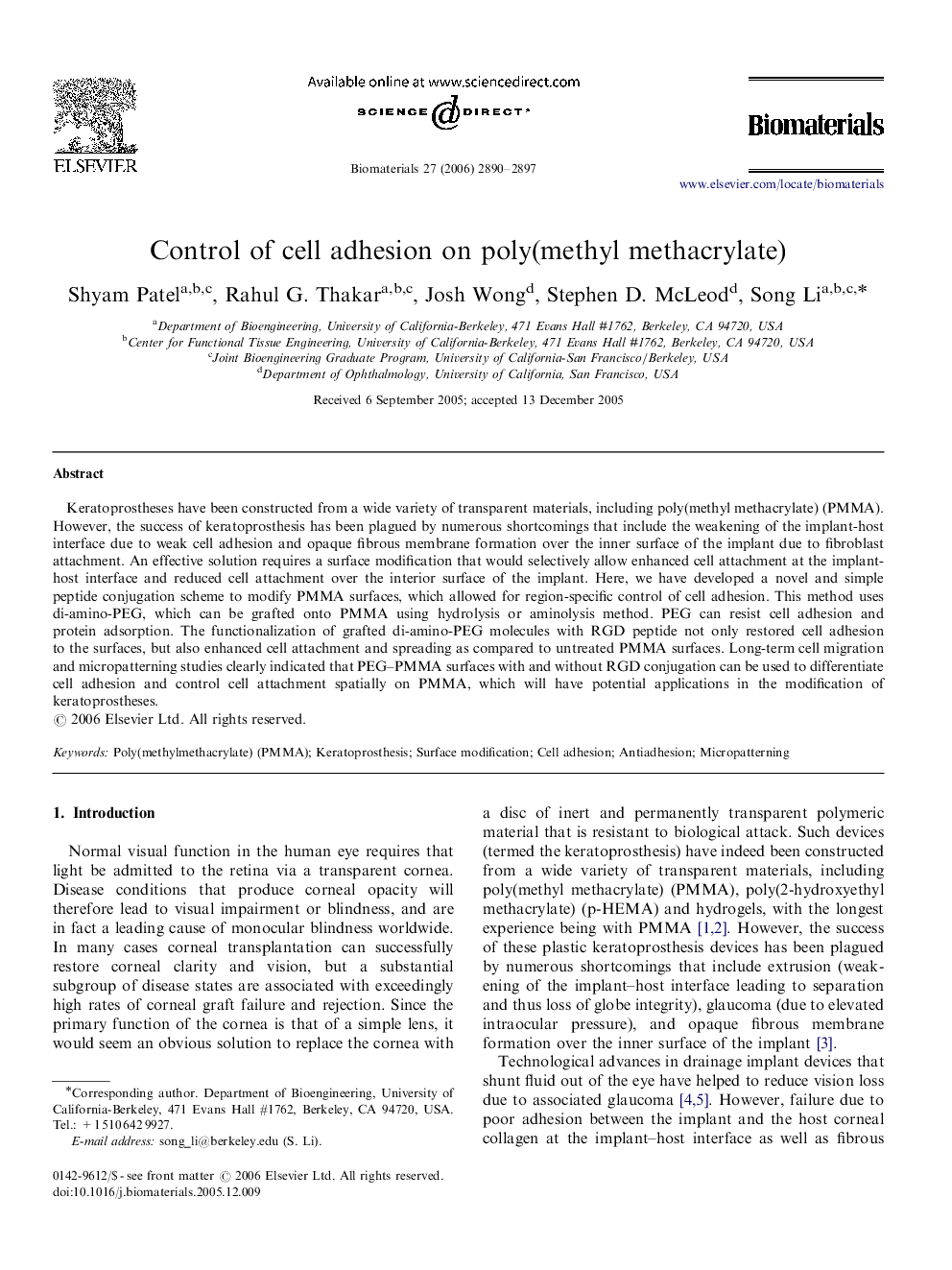| کد مقاله | کد نشریه | سال انتشار | مقاله انگلیسی | نسخه تمام متن |
|---|---|---|---|---|
| 11453 | 741 | 2006 | 8 صفحه PDF | دانلود رایگان |

Keratoprostheses have been constructed from a wide variety of transparent materials, including poly(methyl methacrylate) (PMMA). However, the success of keratoprosthesis has been plagued by numerous shortcomings that include the weakening of the implant-host interface due to weak cell adhesion and opaque fibrous membrane formation over the inner surface of the implant due to fibroblast attachment. An effective solution requires a surface modification that would selectively allow enhanced cell attachment at the implant-host interface and reduced cell attachment over the interior surface of the implant. Here, we have developed a novel and simple peptide conjugation scheme to modify PMMA surfaces, which allowed for region-specific control of cell adhesion. This method uses di-amino-PEG, which can be grafted onto PMMA using hydrolysis or aminolysis method. PEG can resist cell adhesion and protein adsorption. The functionalization of grafted di-amino-PEG molecules with RGD peptide not only restored cell adhesion to the surfaces, but also enhanced cell attachment and spreading as compared to untreated PMMA surfaces. Long-term cell migration and micropatterning studies clearly indicated that PEG–PMMA surfaces with and without RGD conjugation can be used to differentiate cell adhesion and control cell attachment spatially on PMMA, which will have potential applications in the modification of keratoprostheses.
Journal: Biomaterials - Volume 27, Issue 14, May 2006, Pages 2890–2897